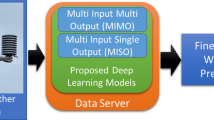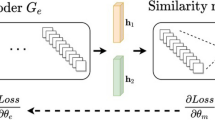Abstract
Over the past few decades, models have been developed to accurately predict electrical charges. Long-term electricity forecast is the expansion of electrical equipment company management in the future. The short-term forecast for fuel and unit maintenance provides the information needed to systematically manage the unit's day-to-day operations and commitments. In this paper, we present the best in-class estimation method (OELF) to overcome micro grid problems. The proposed OELF system uses a hybrid convolutional neural network (CNN) and improved whale (IWO) to meet demand and facilitate economic growth. The main purpose of the CNN-IWO algorithm is to calculate the maximum demand for the micro grid and optimize the controllable load capacity for each project test. By investing in materials that reduce the performance of the micro grid, we can adjust the load on the micro grid and increase the controllable load. Therefore, OELF system for expanding micro grid expansion must carefully design cost control and load control strategies. The result showed that the performance of proposed OELF system is very effective in terms of mean MAPE and mean RMSE. The results clearly shows the average mean MAPE of proposed OELF system is 7.24%, 6.02% and 8.27% lower than the existing fuzzy based system in terms of 2 days, 1 days and 1 h ahead precision. The average mean RMSE of proposed OELF system is 9.37%, 8.34% and 5.41% lower than the existing fuzzy based system in terms of 2 days, 1 days and 1 h ahead precision.




Similar content being viewed by others
References
Amjady N, Keynia F, Zareipour H (2010) Short-term load forecast of micro grids by a new bilevel prediction strategy. IEEE Trans Smart Grid 1(3):286–294
Baczyski D, Parol M (2004) Influence of artificial neural network structure on quality of short-term electric energy consumption forecast. IEE Proc-Gener Trans Distrib 151(2):241–245
Cerne G, Dovzan D, Skrjanc I (2018) Short-term load forecasting by separating daily profiles and using a single fuzzy model across the entire domain. IEEE Trans Industr Electron 65(9):7406–7415
Chakraborty S, Weiss MD, Simoes MG (2007) Distributed intelligent energy management system for a single-phase high-frequency AC microgrid. IEEE Trans Industr Electron 54(1):97–109
Chen C, Duan S, Cai T, Liu B, Hu G (2011) Smart energy management system for optimal microgrid economic operation. IET Renew Power Gener 5(3):258–267
Claessens BJ, Vrancx P, Ruelens F (2016) Convolutional neural networks for automatic state-time feature extraction in reinforcement learning applied to residential load control. IEEE Trans Smart Grid 9(4):3259–3269
Deng YM, Ren XJ (2003) Optimal capacitor switching with fuzzy load model for radial distribution systems. IEE Proc-Gener Trans Distrib 150(2):190–194
Eibl G, Bao K, Grassal P, Bernau D, Schmeck H (2018) The influence of differential privacy on short term electric load forecasting. Energy Inform 1(1):93–113
El-Sharkh MY, El-Keib A (2003) Maintenance scheduling of generation and transmission systems using fuzzy evolutionary programming. IEEE Trans Power Syst 18(2):862–866
Gendeel M, Yuxian Z, Aoqi H (2018) Performance comparison of ANNs model with VMD for short-term wind speed forecasting. IET Renew Power Gener 12(12):1424–1430
Hong Z, Li X, Chen B (2014) Adaptive control based particle swarm optimization and chebyshev neural network for chaotic systems. J Comput 9(6):1385–1390
Huang SJ, Shih KR (2003) Short-term load forecasting via ARMA model identification including non-gaussian process considerations. IEEE Trans Power Syst 18(2):673–679
Huang KY, Chin H, Huang Y (2004) A model reference adaptive control strategy for interruptible load management. IEEE Trans Power Syst 19(1):683–689
Jiang Q, Xue M, Geng G (2013) Energy management of microgrid in grid-connected and stand-alone modes. IEEE Trans Power Syst 28(3):3380–3389
Kanchev H, Lu D, Colas F, Lazarov V, Francois B (2011) Energy management and operational planning of a microgrid with a PV-based active generator for smart grid applications. IEEE Trans Ind Electron 58(10):4583–4592
Li Y, Han D, Yan Z (2018) Long-term system load forecasting based on data-driven linear clustering method. J Modern Power Syst Clean Energy 6(2):306–316
Liao H, Niebur D (2003) Load profile estimation in electric transmission networks using independent component analysis. IEEE Trans Power Syst 18(2):707–715
Luo J, Hong T, Yue M (2018) Real-time anomaly detection for very short-term load forecasting. J Modern Power Syst Clean Energy 6(2):235–243
McPherron R, Siscoe G (2004) Probabilistic forecasting of geomagnetic indices using solar wind air mass analysis. Space Weather. https://doi.org/10.1029/2003SW000003
Nasiri J, Khiyabani F (2018) A whale optimization algorithm (WOA) approach for clustering. Cogent Math Stat 5(1):1–13
Palma-Behnke R, Benavides C, Lanas F, Severino B, Reyes L, Llanos J, Saez D (2013) A microgrid energy management system based on the rolling horizon strategy. IEEE Trans Smart Grid 4(2):996–1006
Pan L, Feng X, Sang F, Li L, Leng M, Chen X (2017) An improved back propagation neural network based on complexity decomposition technology and modified flower pollination optimization for short-term load forecasting. Neural Comput Appl 31(7):2679–2697
Rafiei M, Niknam T, Aghaei J, Shafie-Khah M, Catalao J (2018) Probabilistic load forecasting using an improved wavelet neural network trained by generalized extreme learning machine. IEEE Trans Smart Grid 9(6):6961–6971
Saez D, Avila F, Olivares D, Canizares C, Marin L (2015) Fuzzy prediction interval models for forecasting renewable resources and loads in microgrids. IEEE Trans Smart Grid 6(2):548–556
Sfetsos A (2003) Short-term load forecasting with a hybrid clustering algorithm. IEE Proc-Gener Trans Distrib 150(3):257–262
Shakya A, Michael S, Saunders C, Armstrong D, Pandey P, Chalise S, Tonkoski R (2016) Solar irradiance forecasting in remote microgrids using markov switching model. IEEE Trans Sustain Energy 8(3):895–905
Wang Z, Chen Y, Mei S, Huang S, Xu Y (2017) Optimal expansion planning of isolated micro grid with renewable energy resources and controllable loads. IET Renew Power Gener 11(7):931–940
Wang Y, Chen Q, Zhang N, Wang Y (2018) Conditional residual modeling for probabilistic load forecasting. IEEE Trans Power Syst 33(6):7327–7330
Zhang Y, Liu Y, Guo B, Zhang T, Wang R (2016) Model predictive control-based operation management for a residential microgrid with considering forecast uncertainties and demand response strategies. IET Gener Transm Distrib 10(10):2367–2378
Zhang W, Quan H, Srinivasan D (2018) An improved quantile regression neural network for probabilistic load forecasting. IEEE Trans Smart Grid 10(4):4425–4434
Author information
Authors and Affiliations
Corresponding author
Additional information
Publisher's Note
Springer Nature remains neutral with regard to jurisdictional claims in published maps and institutional affiliations.
Rights and permissions
About this article
Cite this article
Karthik, S.S., Kavithamani, A. OELF: short term load forecasting for an optimal electrical load forecasting using hybrid whale optimization based convolutional neural network. J Ambient Intell Human Comput 14, 7023–7031 (2023). https://doi.org/10.1007/s12652-021-03556-4
Received:
Accepted:
Published:
Issue Date:
DOI: https://doi.org/10.1007/s12652-021-03556-4




